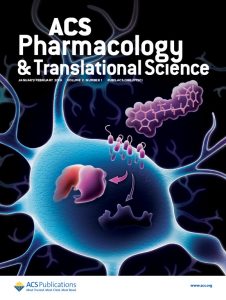 Featured Paper of the Month – September 2019.
Featured Paper of the Month – September 2019.
The discovery of functionally biased and physiologically beneficial ligands directed toward G-protein coupled receptors (GPCRs) has provided the impetus to design dopamine D2 receptor (D2R) targeted molecules that may be therapeutically advantageous for the treatment of certain neuropsychiatric or basal ganglia related disorders. Here we describe the synthesis of a novel series of D2R agonists linking the D2R unbiased agonist sumanirole with privileged secondary molecular fragments. The resulting ligands demonstrate improved D2R affinity and selectivity over sumanirole. Extensive in vitro functional studies and bias factor analysis led to the identification of a novel class of highly potent Go-protein biased full D2R agonists with more than 10-fold and 1000-fold bias selectivity toward activation of specific G-protein subtypes and β-arrestin, respectively. Intracellular electrophysiological recordings from midbrain dopamine neurons demonstrated that Go-protein selective agonists can elicit prolonged ligand-induced GIRK activity via D2Rs, which may be beneficial in the treatment of dyskinesias associated with dopamine system dysfunction.
Publication Information
Novel and Potent Dopamine D2 Receptor Go-Protein Biased Agonists. Journal Article
In: ACS Pharmacol Transl Sci, vol. 2, no. 1, pp. 52–65, 2019, ISSN: 2575-9108 (Electronic); 2575-9108 (Linking).
